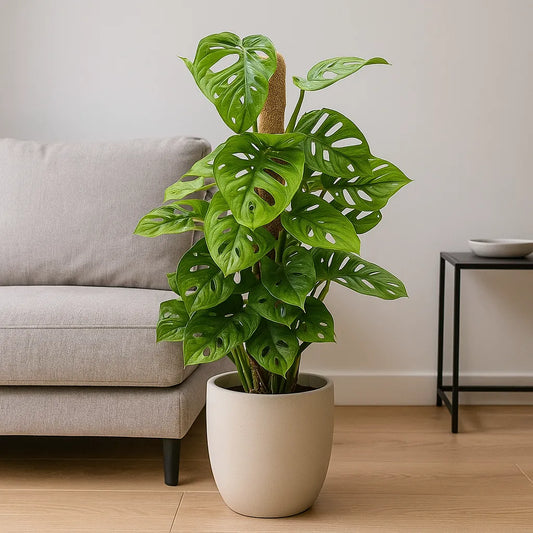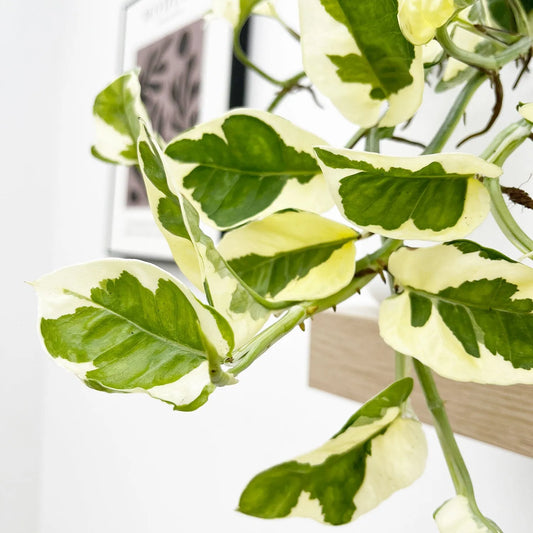Why does my Alocasia Zebrina have yellow leaves?
The Alocasia Zebrina is a beautiful plant that looks stunning in any home or office, but it can be a temperamental plant sometimes. It is not uncommon for the leaves of this plant to turn yellow if there is an issue. Luckily, the Alocasia is an easy to look after houseplant that bounces back quickly from any issues once they have been sorted out. In this guide, we will take you through the main reasons why your Alocasia’s leaves are turning yellow and how to fix them.
Why do Alocasia leaves turn yellow?
The Alocasia plant is native to the tropical forests of Asia and Eastern Australia. Plants in this region have adapted to a very specific environment and can easily become stressed if put in an environment that is different from what they are used to. A stressed Alocasia will produce yellow leaves. However, this doesn’t mean that you are doomed to always have a yellow Alocasia, tropical plants can be very adaptive as long as you give them the right conditions. An Alocasia Zebrina is a very robust plant, and can thrive well in a UK home.
Causes of yellow Alocasia Zebrina leaves
Aging - Yellow leaves on an Alocasia can be a natural part of the plant's life cycle. Older leaves will turn yellow and die. Age-based yellowing will happen in older leaves first. As long as the other leaves on your plant are looking healthy, and you have plenty of young leaves, just remove the dying leaves to make room for new growth.
Overwatering - It is easy to accidentally overwater an Alocasia Zebrina, and the first sign that you have done so is yellowing leaves. The first thing you should do if you think you have an overwatered Alocasia Zebrina is to check the soil. If it is wet to the touch then there is too much water in the container. You will also need to check the plant for root rot. You can do this by gently lifting the plant. If the roots are brown and spongy then the roots are rotting.
To fix an overwatered Alocasia, first make sure that the container is draining, if it’s not you may need to change the pot or put more holes in the bottom if it. If the drainage is working well, then you should let the soil dry out, and readjust your watering schedule so you give the soil enough time to dry out between waterings.
Water Quality - Alocasia, and most other tropical plants, are sensitive to heavily mineralised or chemically treated water. When an Alocasia Zebrina is getting the wrong type of water it will show it with yellowing leaves that will also display brown tips and spotting on the leaves. This is a really easy problem to fix, and doesn’t require you to buy expensive bottled water. You can water your Alocasia Zebrina with tap water, but make sure to treat it with a few drops of dechlorinator. If the leaves continue to yellow you should change to rainwater or put your tap water through a filter.
Soil - The best kind of soil for an Alocasia Zebrina is one that is light and open to allow good drainage and some small amount of water retention. A good potting mix mixed with a small amount of peat and sand is a good soil mix for an Alocasia.
Lighting - Most tropical plant species are light lovers so it’s common for Alocasia leaves to turn yellow because of lighting problems. The Alocasia Zebrina likes bright, indirect light, but it is worth remembering that the light in their natural habitat is much more intense than that in the UK.
When your plant is not receiving enough light, the leaves will begin to yellow as it diverts all its energy into growing the stems. This results in a leggy plant that leans towards the nearest light source. To correct a lighting issue it’s recommended to relocate your plant to a sunnier area or buy a grow light for it.
Temperature - Leaf yellowing is a possible sign that your plant is too cold. Alocasia are heat-loving plants that do well in temperatures between 18ºC and 29ºC. The plant isn’t frost tolerant and suffers as temperatures fall below 13ºC. If you keep indoor temperatures cool, your Alocasia might not be getting the heat it needs. It’s also important to keep the temperature from fluctuating too rapidly. Some growers use a heating pad to keep their plant’s roots warmer than room temperature.
Humidity - Alocasia love humid spaces. They will adapt to lower levels, but will grow best at levels above 60% or even 70% humidity. Yellow leaves with brown edges and a dry texture are signs that your humidity is too low. Discolouration happens gradually on leaves all over the plant. A safe minimum is about 50% humidity, you should buy a Hygrometer to accurately test your plants humidity levels. You can boost humidity levels by grouping your Alocasia with other tropical plants and placing water-filled trays close by or by placing your plant on a pebble tray.
Lack Of Fertiliser - Though it’s not common, a lack of nutrition can result in Alocasia leaves turning yellow. Alocasia grow quickly during the warm growing season and benefit from regular feeding every two to four weeks with a diluted fertiliser. A lack of fertile soil will cause your plant to begin shedding its leaves. Don’t rush to feed the plant more, increase your fertiliser application gradually to avoid shock. If you haven’t been fertilising your plant, establish a regular feeding plan; if you already fertilize, stick to the schedule but increase the amount slightly.
Over fertilisation - It’s easier to over-feed an Alocasia than it is to underfeed it. If you see burned leaf tips and edges on leaves that have gone yellow it’s a sign that you have overfed your plant. Too much fertiliser in the soil can also cause the roots to burn. Make changes to your established feeding routine slowly and watch how the plant reacts. You should feed only in spring and summer and stop fertilisation in the cooler months. Over fertilisation toxifies the soil with residual salts. To avoid this you must flush out the buildup by watering the soil thoroughly and let excess water out of the drainage holes.
Take a look at our full range of Alocasia plants











Leave a comment
Please note, comments need to be approved before they are published.